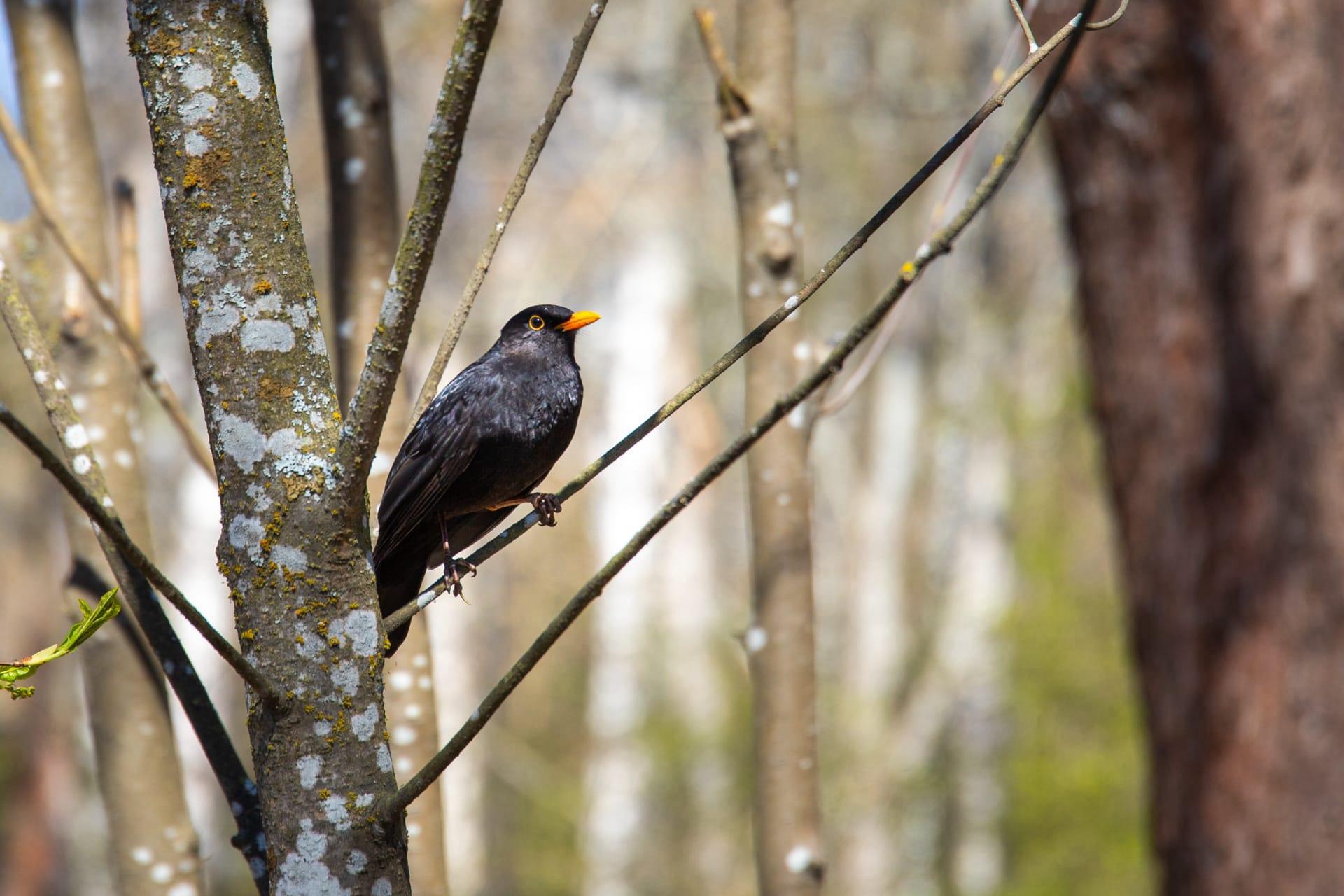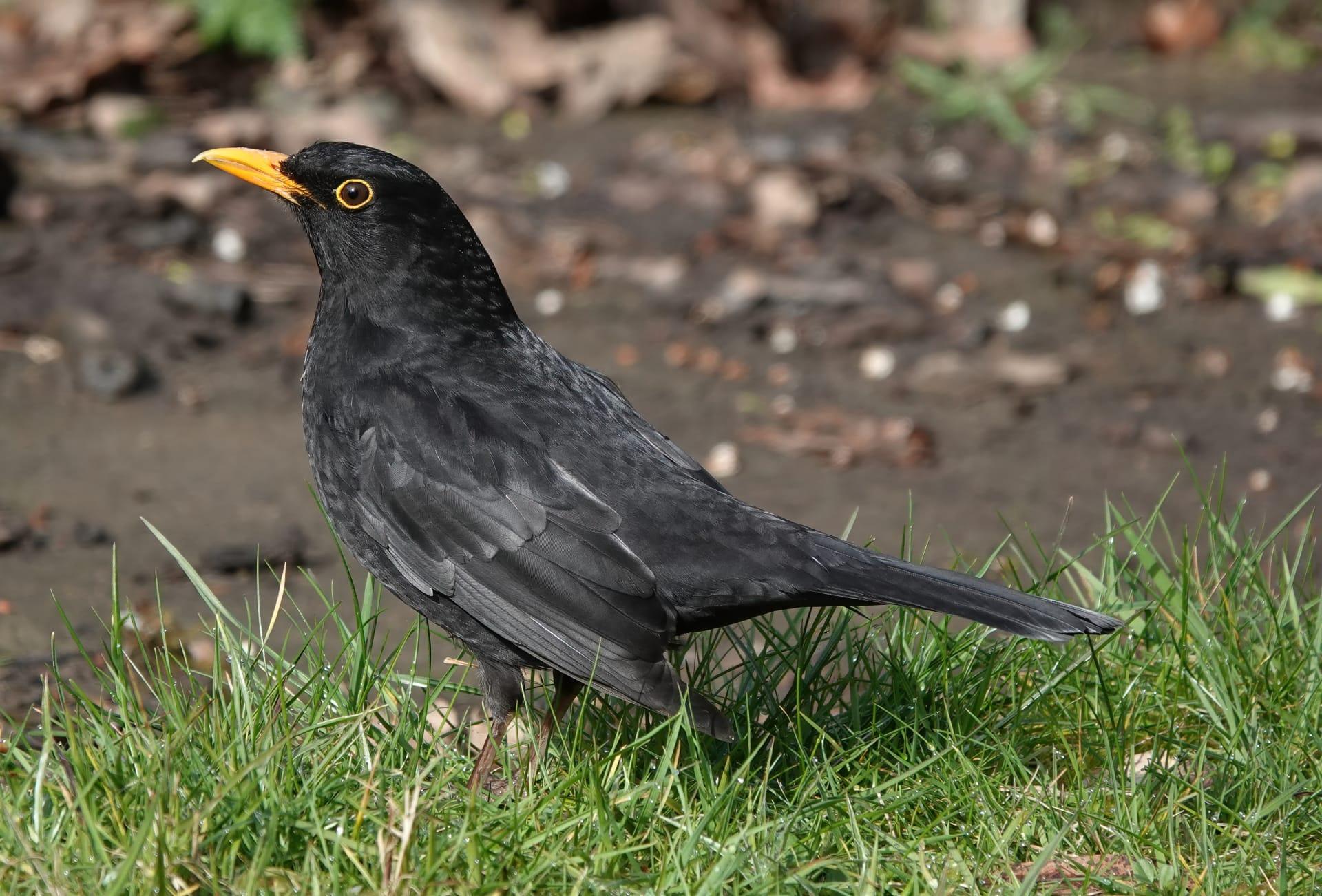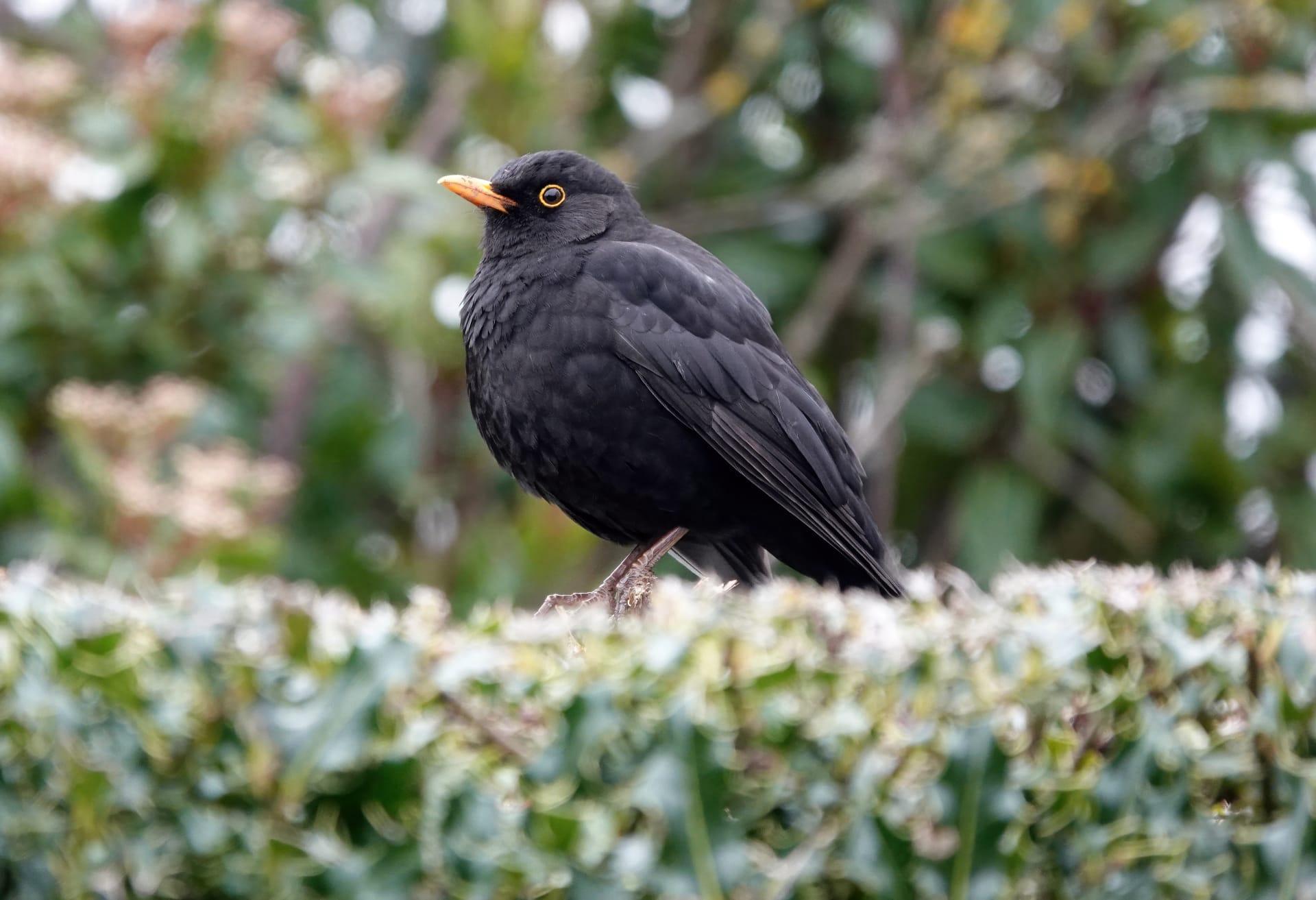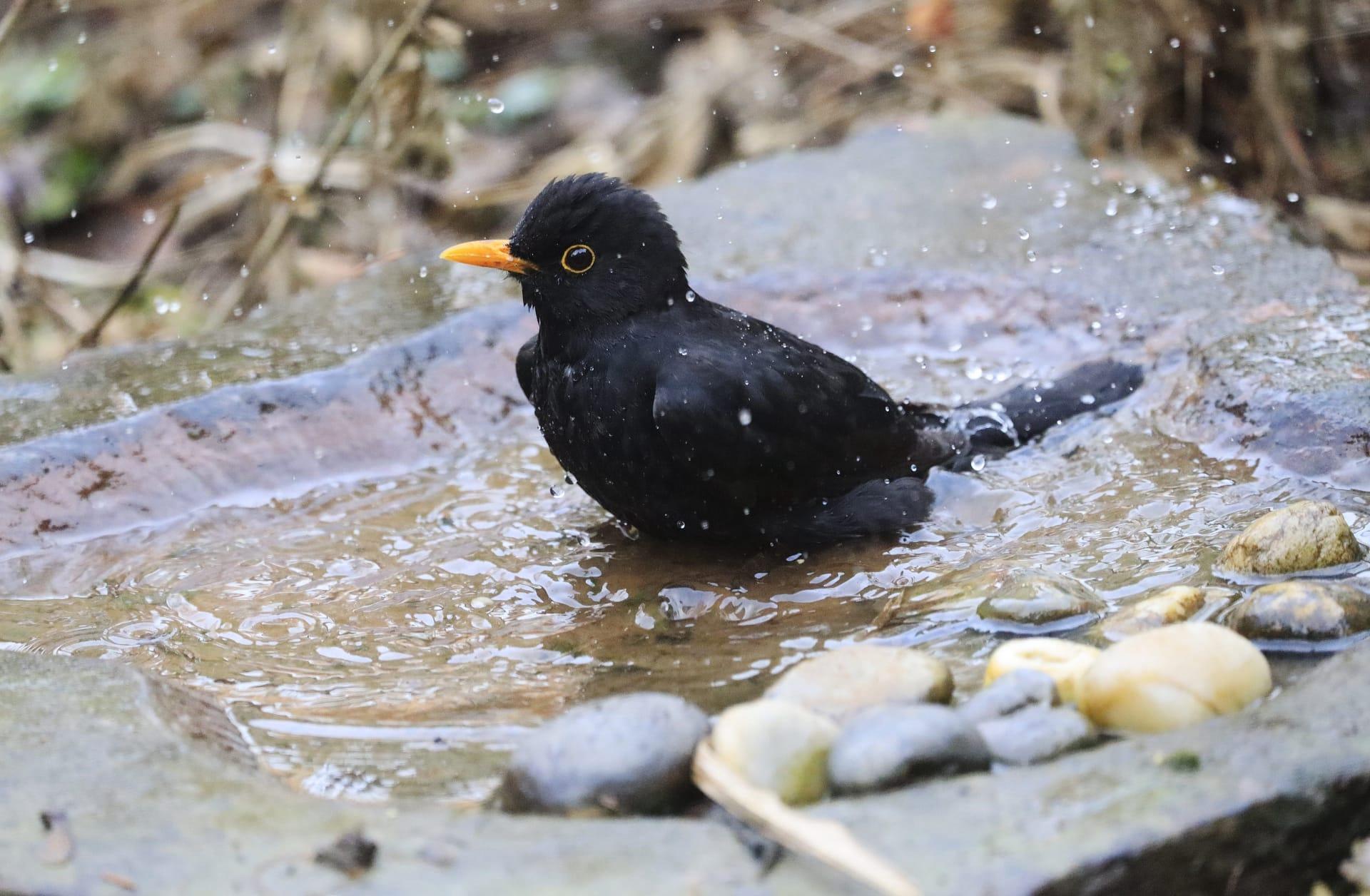1
Blackbirds, known scientifically as Turdus merula, are renowned for their melodious songs. These birds possess a diverse vocal repertoire, with males capable of producing over 100 different sound variations. Their songs are not innate but learned, with young blackbirds acquiring their tunes from surrounding adults. This ability to adapt and change their songs makes each blackbird's singing unique. During the mating season, male blackbirds sing more frequently, especially at dawn, in a phenomenon known as the dawn chorus. Their song, characterized by fluid and fluty tones, can reach up to 90 decibels, almost as loud as a lawn mower.
Another fascinating fact about blackbirds is their distinct coloration. Male blackbirds are easily recognizable by their jet-black plumage and bright orange-yellow beak and eye-ring. This striking contrast not only makes them visually appealing but also plays a significant role in their mating rituals. Females, on the other hand, are brown with lighter underparts and a brown beak, offering them better camouflage while nesting. This sexual dimorphism in coloration is a classic example of evolutionary adaptation, where males display more vibrant colors to attract mates, while females maintain subtler hues for protection and nesting efficiency.

2
Blackbirds display remarkable adaptability in their diet, which varies seasonally. In spring and summer, they primarily feast on insects and worms, making up about 40% of their diet. This shift towards protein-rich food is crucial for their breeding season, aiding in the development of their offspring. As the seasons change to autumn and winter, their diet transitions to fruits and berries, which constitute about 60% of their intake. This dietary flexibility ensures their survival across varying environmental conditions and food availability.
The nesting habits of blackbirds are equally intriguing. They typically build their nests low in bushes or shrubs, using grass, twigs, and mud. A unique aspect of their nesting is the 'mud cup' - a layer of mud that lines the inside of the nest, providing stability and insulation. Female blackbirds are the primary builders, meticulously constructing and shaping the nest over several days. They lay 3-5 eggs per clutch, with a distinctive light blue or green color and reddish-brown spots. The eggs hatch after about 14 days, showcasing the efficient reproductive cycle of these birds.

3
Blackbirds are not just restricted to rural areas; they have successfully adapted to urban environments. In cities, they take advantage of gardens, parks, and even rooftops for nesting and foraging. This adaptability is a testament to their resilience and ability to thrive in varied habitats. Urban blackbirds often alter their behavior to suit the city life; for example, they become less fearful of humans and may alter their feeding habits to include food scraps provided by people.
Another fascinating aspect of blackbirds is their migration patterns. While blackbirds in the northern parts of their range tend to migrate to warmer regions during winter, those living in milder climates are often sedentary. This migration is not just a simple relocation; it involves complex navigation skills, where birds use the earth's magnetic field, the position of the sun, and stars to guide them. The distances covered can be quite significant, with some birds traveling over 1,000 kilometers to reach their wintering grounds.

4
Blackbirds play a vital role in their ecosystems, particularly in seed dispersal and pest control. By consuming various fruits and berries, they help in spreading the seeds of these plants, aiding in plant biodiversity and regeneration. In their quest for insects, blackbirds help control pest populations, making them natural gardeners. Their foraging behavior contributes significantly to the health and balance of their habitats.
Interestingly, blackbirds can live relatively long for small birds. In the wild, their average lifespan is about 3-4 years, but they can live up to 10 years in favorable conditions. The oldest recorded blackbird lived to be 20 years old, which is exceptional for their species. This longevity is a result of their adaptable nature and ability to avoid predators, as well as the success of their reproductive strategies and the care they provide to their offspring.

5
Blackbirds have a keen sense of sight and hearing, which are crucial for their survival. Their vision is adapted to detect movement, aiding them in locating food and evading predators. Their hearing is equally impressive, allowing them to hear worms and insects under the soil, which is vital for their foraging. This acute sensory perception is a key factor in their adaptability and success as a species.
Finally, blackbirds have a significant presence in culture and folklore. In many cultures, they symbolize the arrival of spring or are seen as omens of good or bad luck. The blackbird's song, particularly, has been celebrated in poetry, songs, and stories, often symbolizing joy, creativity, and the beauty of nature. Their ubiquity and distinctive characteristics have made them a recurring symbol in human art and mythology, highlighting the deep connection between wildlife and human culture.